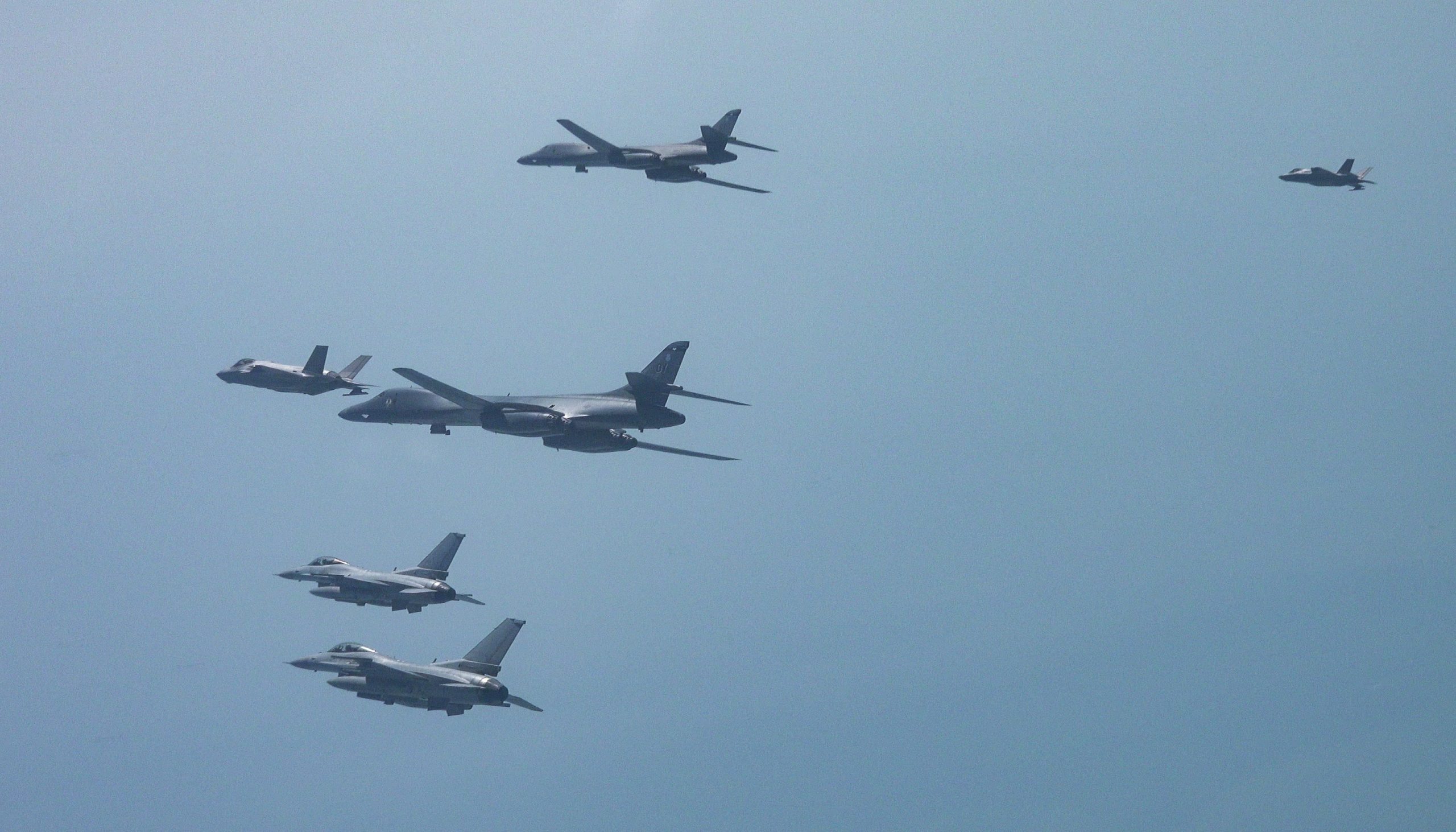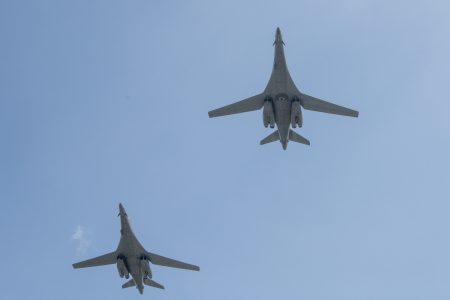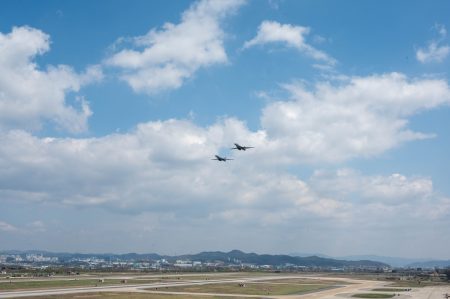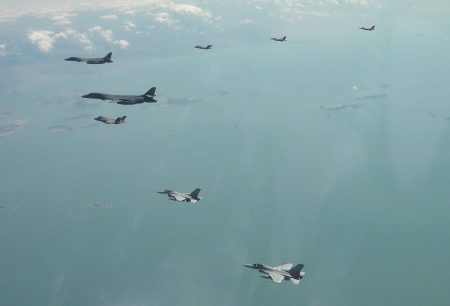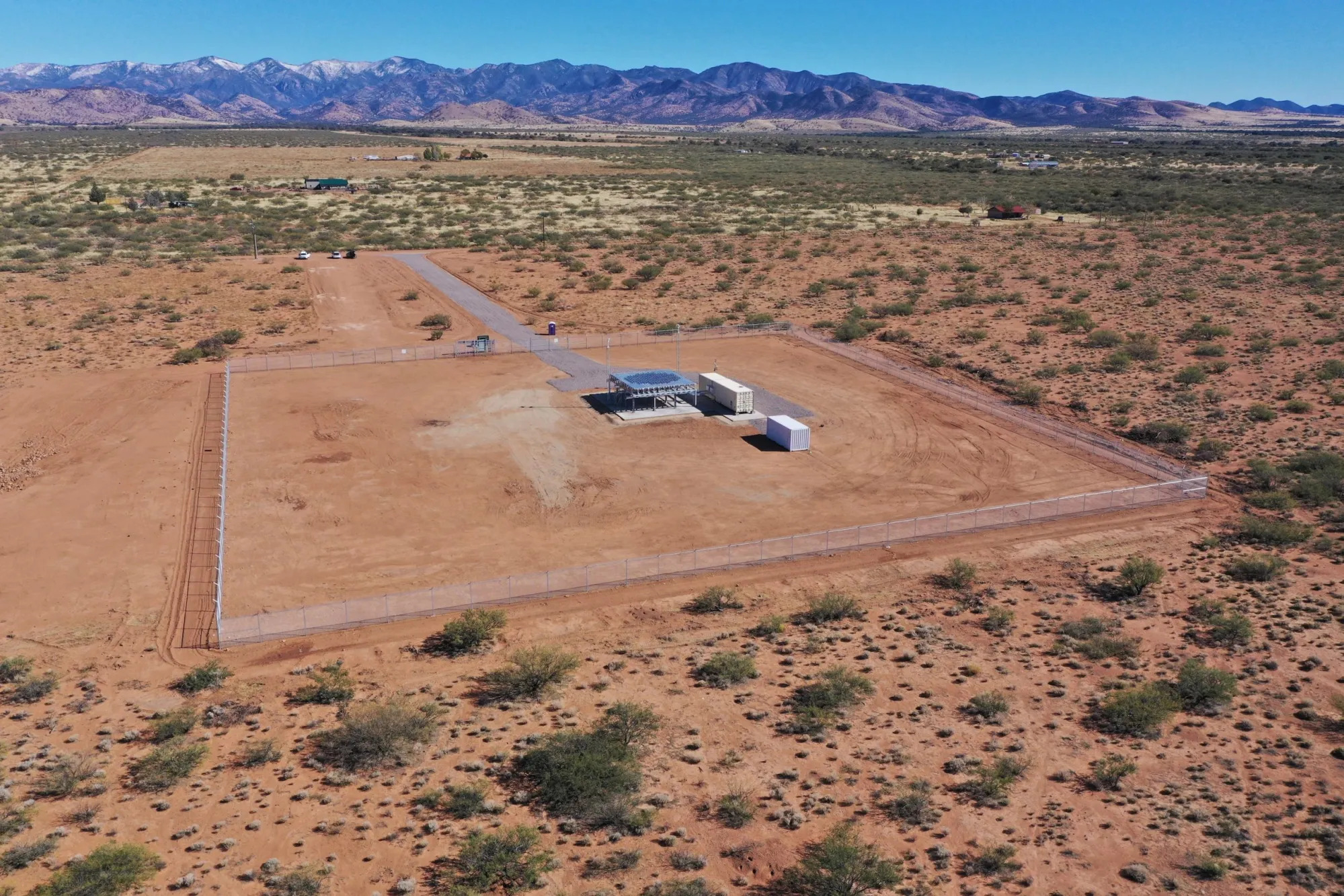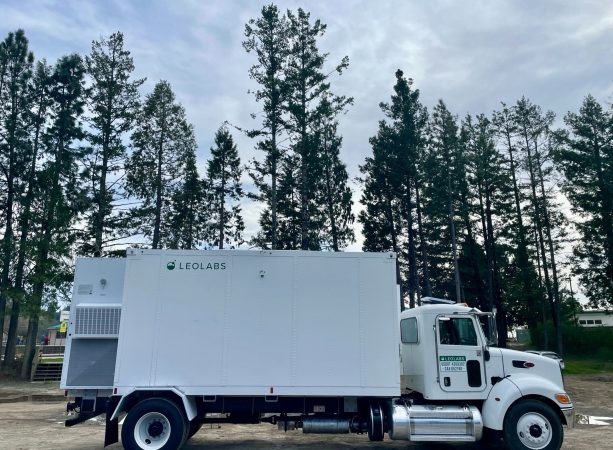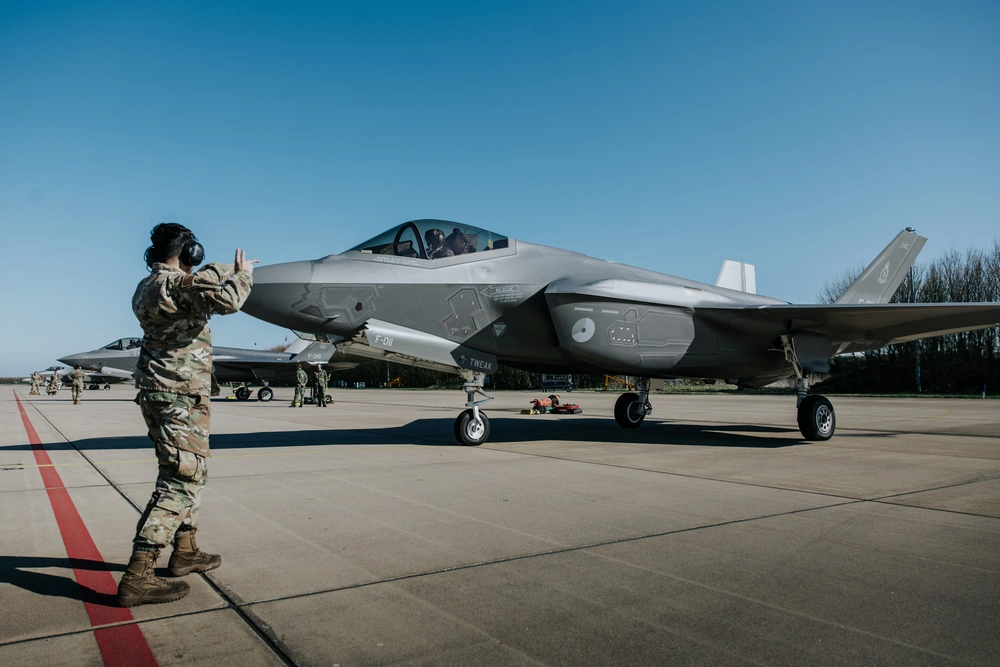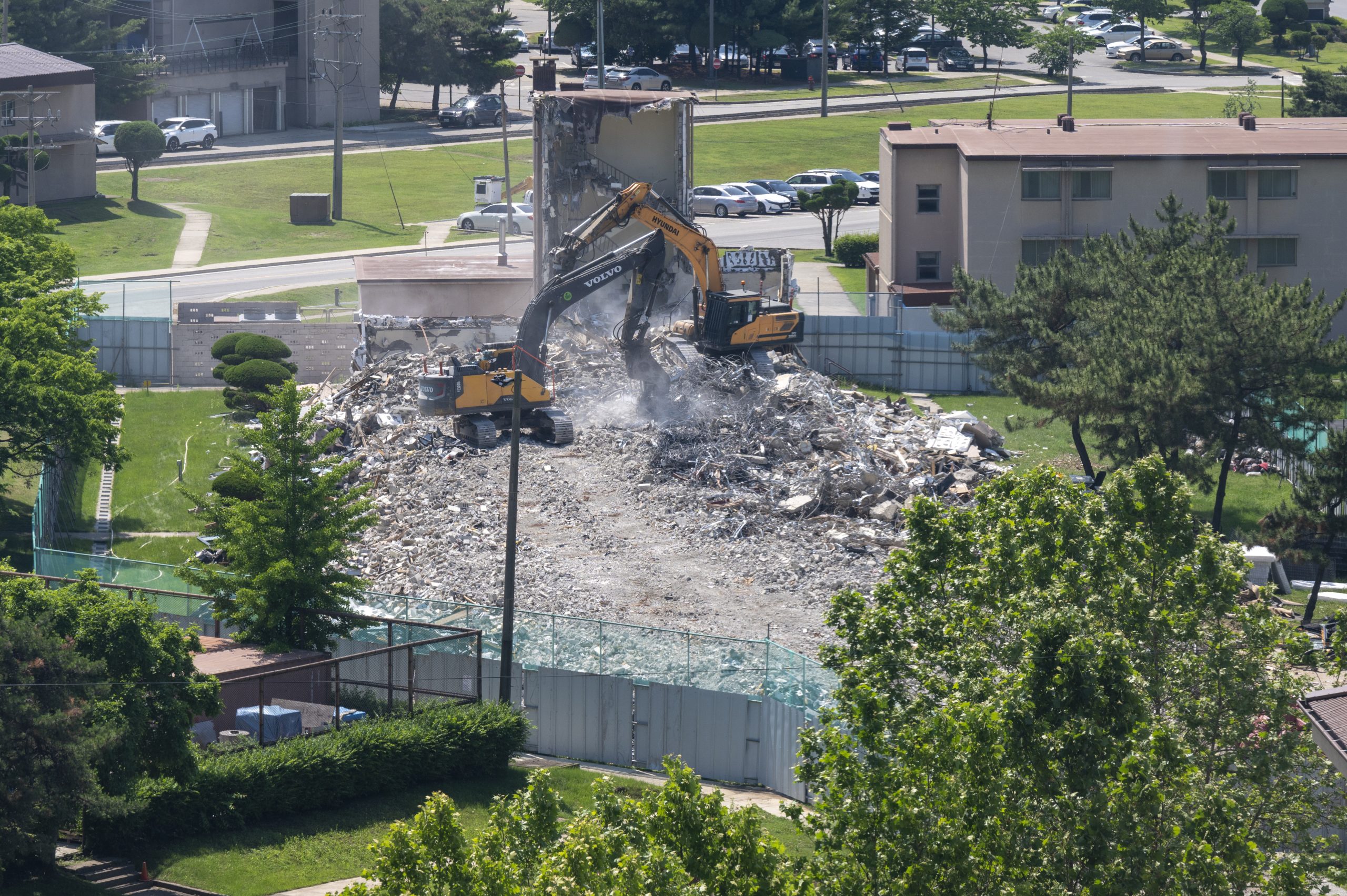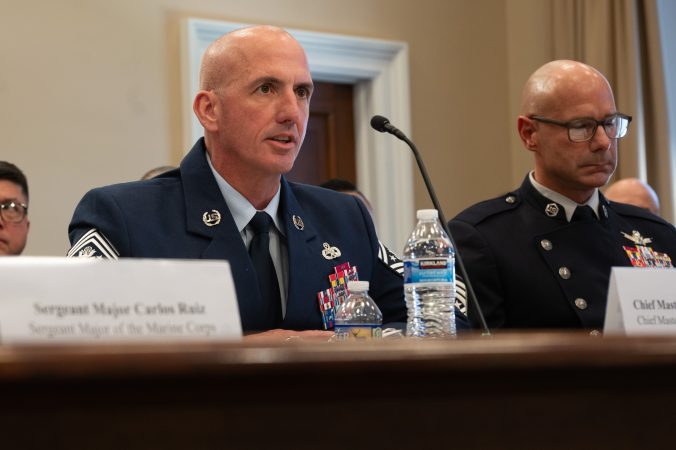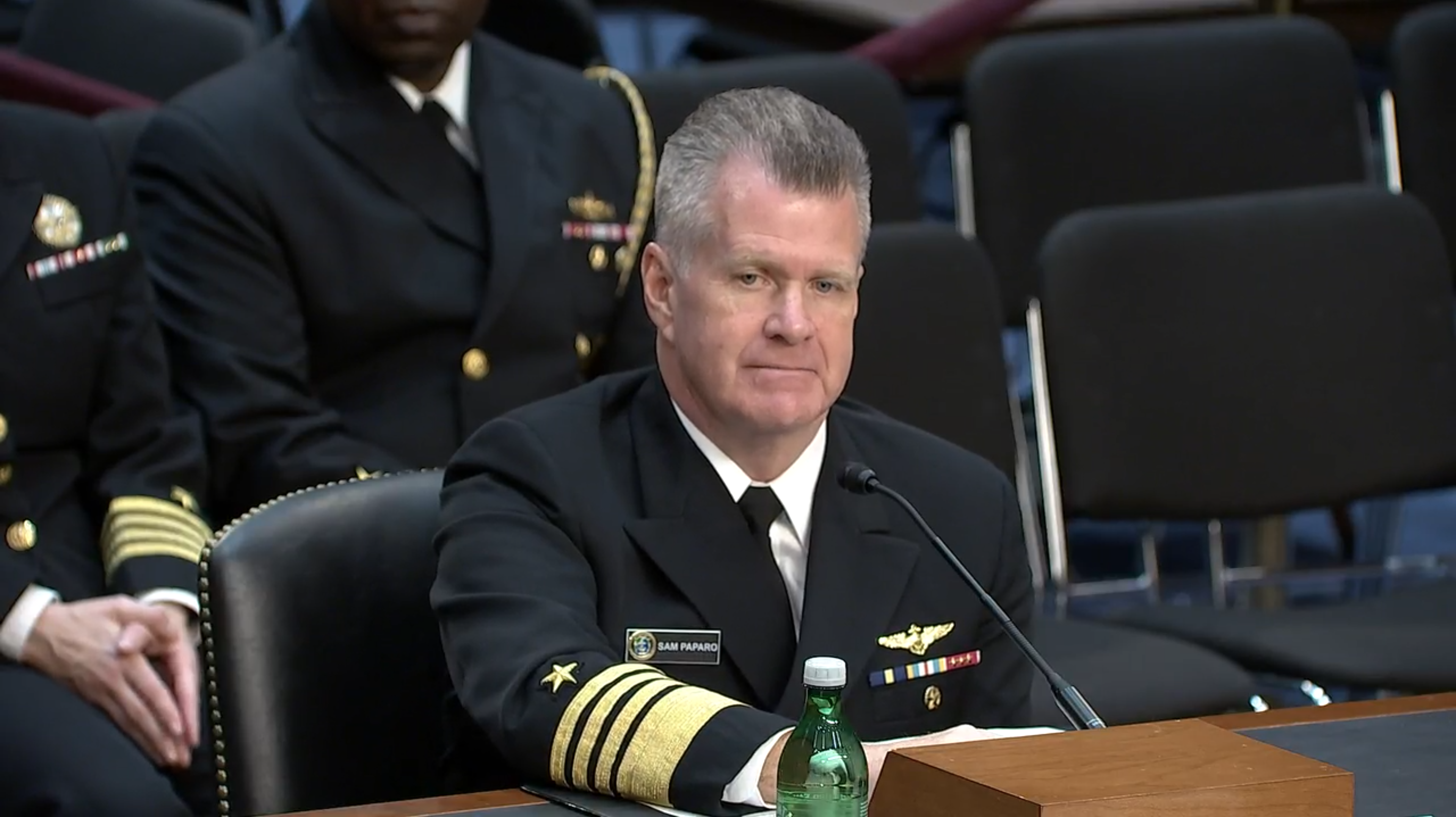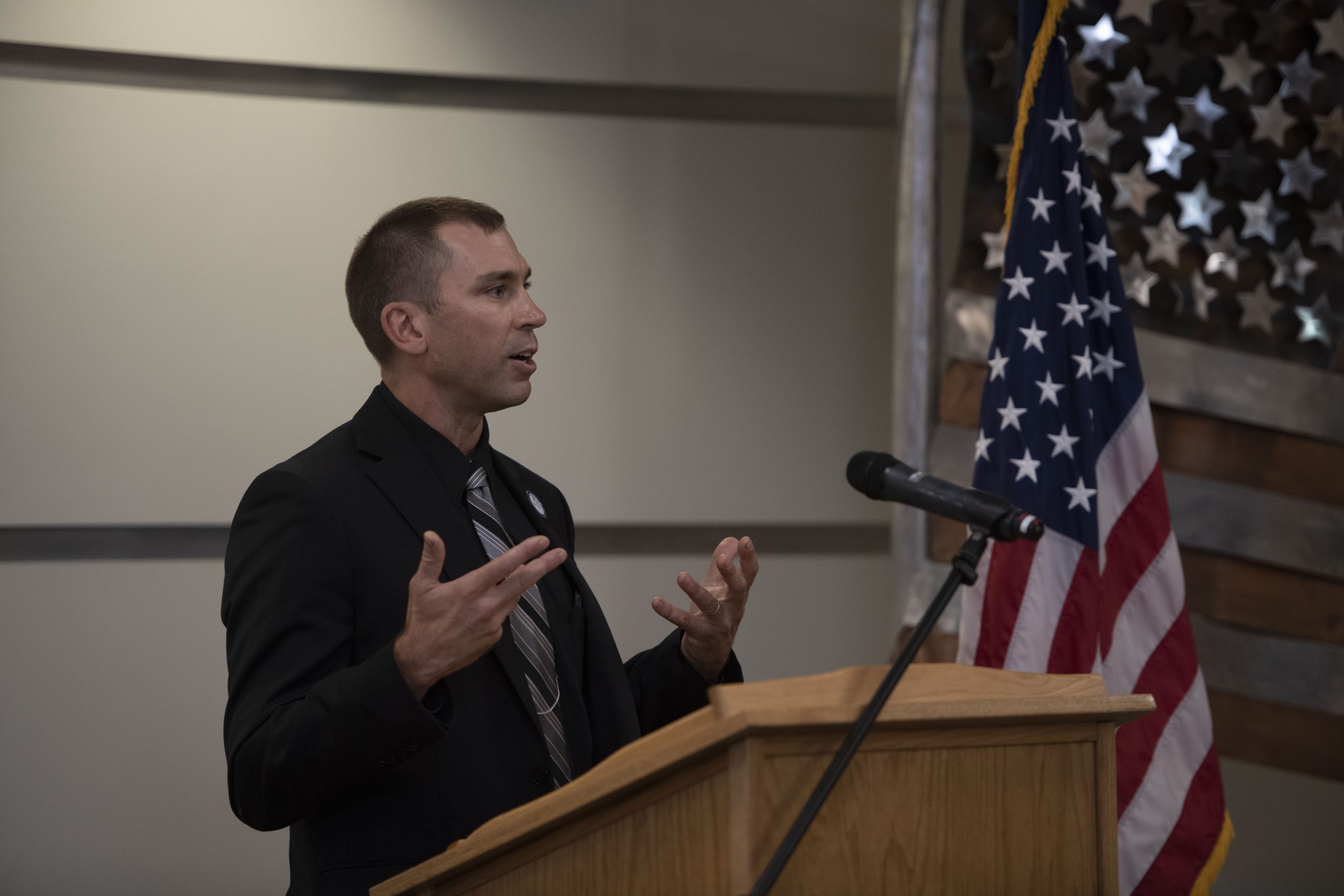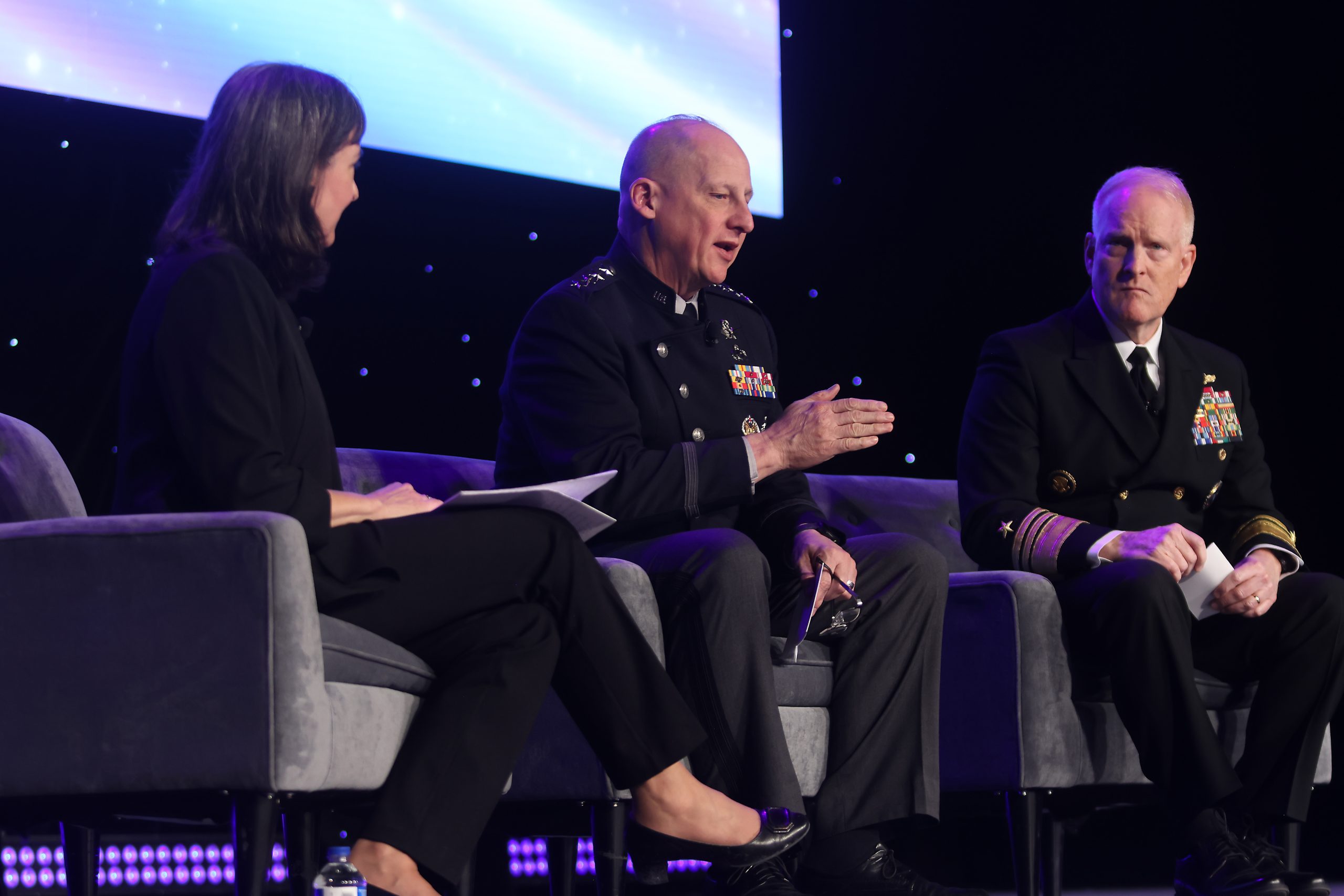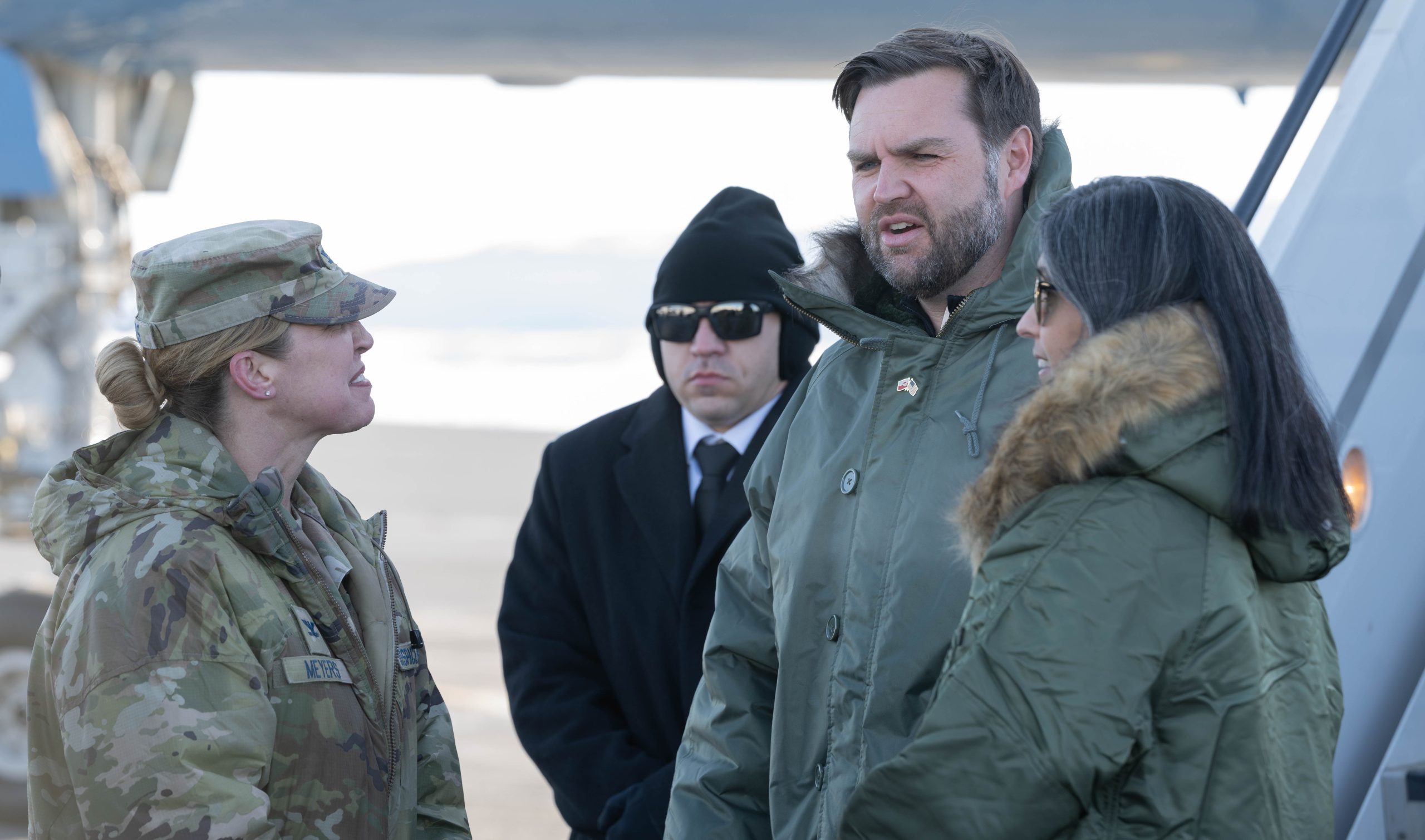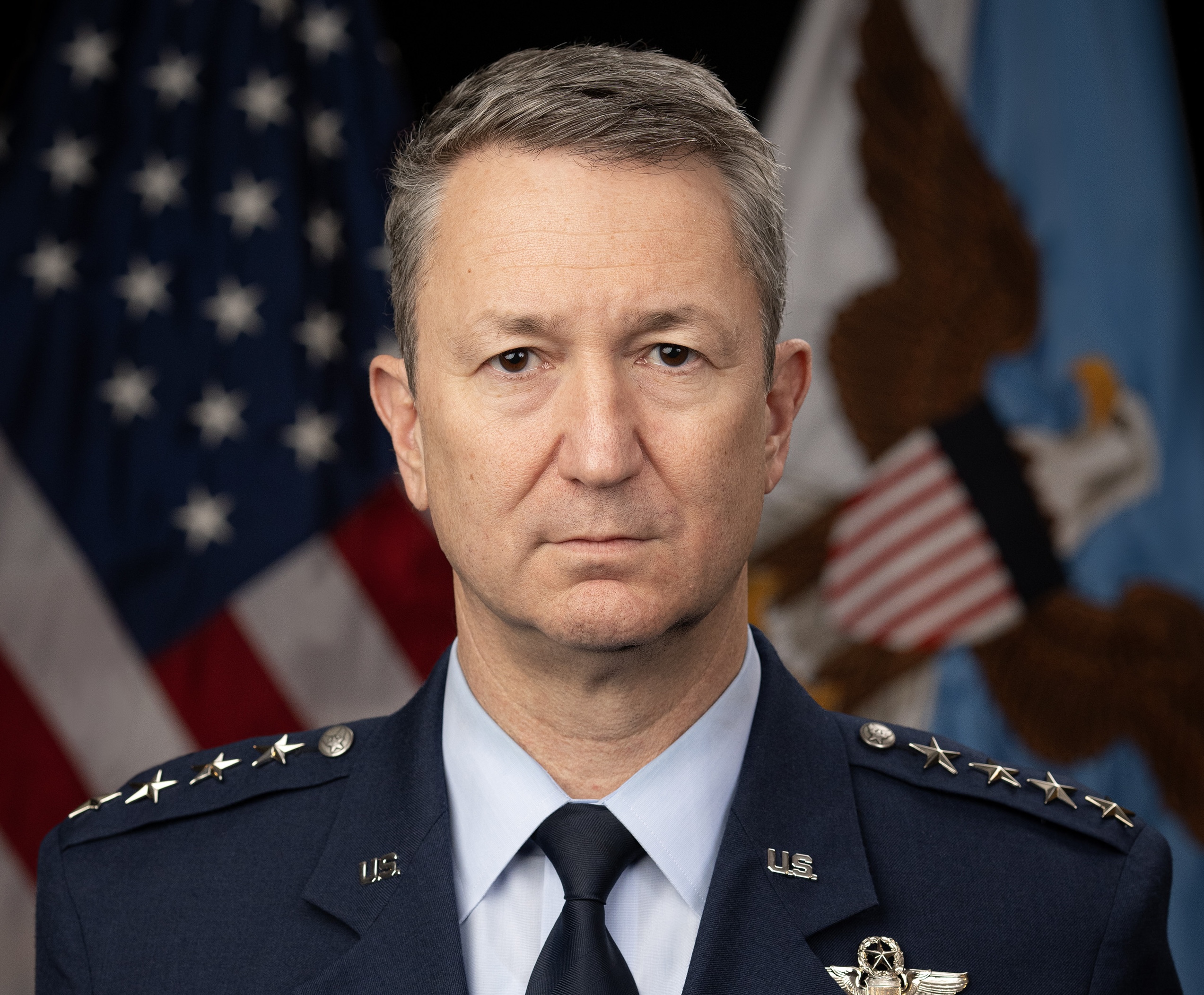B-1Bs from Dyess Air Force Base, Texas, flew over South Korea alongside U.S. and Korean fighters on April 15, adding to the already robust USAF bomber presence in the Indo-Pacific.
The BONEs flew over the western part of the Korean peninsula, overflying Osan Air Base, according to a release from the 7th Air Force, escorted by U.S. Air Force F-16s and Republic of Korea Air Force F-35s and F-16s.
“The fighters and bombers engaged in offensive and defensive counter air training together, refining combined tactics, techniques, and procedures,” the 7th Air Force release stated.
The B-1s then departed Korean airspace.
The release did not specify where the B-1s came from, but released photos and public flight tracking data identified them as being from Dyess.
The flight was the third U.S. bomber mission with South Korea this calendar year, and the second since President Donald Trump took office. It came as North Korea celebrated the anniversary of state founder Kim Il Sung, great grandfather of North Korea’s Kim Jung Un, and it followed a CNN report showing satellite images revealing construction of a massive new North Korean warship.
North Korea often engages in heated rhetoric in the wake of U.S. bomber missions in the region, and has occasionally conducted missile tests in response. The U.S. and South Korea have sometimes responded to such provocations with additional patrols.
The two B-1s in eastern Asia flew as multiple B-2 Spirits are stationed at Naval Support Facility Diego Garcia in the Indian Ocean. The B-2s, which have been at the remote island for several weeks, have reportedly been taking part in the U.S. air offensive against Iran-backed Houthi rebels in Yemen. Yet Diego Garcia is roughly equidistant from southeast Asia and the South China Sea and the Middle East, making it a valuable location for operations in both theaters.
